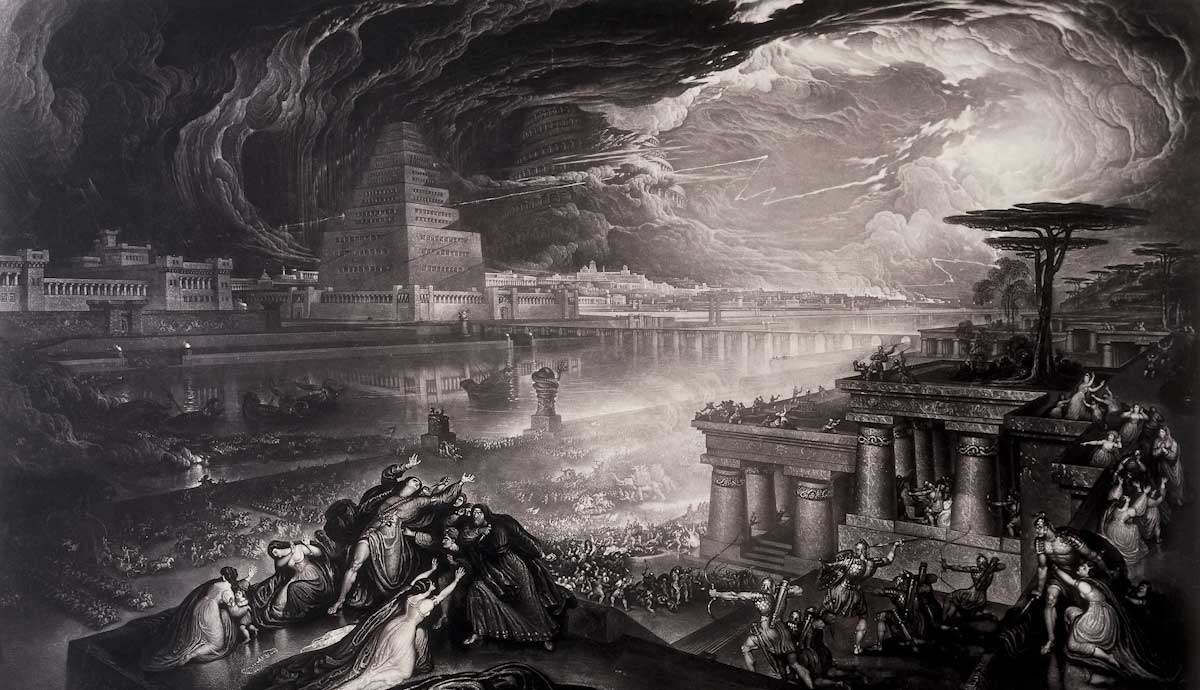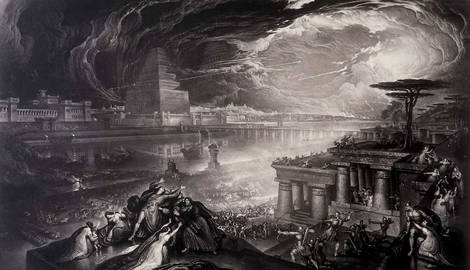
summary
- The Hanging Gardens of Babylon, an ancient wonder, remain an archaeological mystery with no conclusive evidence.
- Ancient texts describe the Gardens as terraced structures with sophisticated irrigation, a marvel of engineering.
- King Nebuchadnezzar II is often credited with building them for his homesick wife, Amytis.
- Some scholars propose that the legendary gardens were actually located in Nineveh, built by King Sennacherib.
The Ancient world was full of wanderers. Soldiers, mercenaries, merchants, travelers, and writers set out from the Greek mainland to venture to the far corners of the Mediterranean and beyond. They were all captivated by the wonders they encountered. The most famous sights were the so-called Seven Wonders of the Ancient World. The Hanging Gardens of Babylon were distant from the Mediterranean basin and the other ancient wonders. They were mysterious in the ancient world, and continue to be mysterious today, as the only ancient wonders not identified by archaeologists.
What Were the Hanging Gardens of Babylon?

The Hanging Gardens of Babylon are the only one of the Seven Wonders of the Ancient World that have so far eluded archaeologists and historians. No conclusive archaeological evidence has ever been discovered to provide an indication as to their location or appearance. Instead, we have to rely on a series of short references to them in a variety of different textual sources.
The earliest known written reference to the Gardens is by Berossus, a priest of Marduk from Babylon, who described the Gardens in an account that is preserved by the Jewish historian Flavius Josephus, active during the reign of Vespasian and the later Flavian emperors. According to this source, the Gardens were “terraces of stone” with “the look of hills.”

Another account is presented by the ancient Greek geographer Strabo. In his Geography, Strabo described the Gardens as “vaulted terraces, raised one above another, and resting upon cube-shaped pillars. … The pillars, the vaults, and the terraces are constructed of baked brick and asphalt. … At their side are water engines, by means of which persons, appointed expressly for the purpose, are continually employed in raising water from the Euphrates into the garden.”
While the exact design of the Hanging Gardens is still a matter of debate, there is no denying that they were a monument of Babylonian engineering and architectural mastery.
Who Built the Hanging Gardens of Babylon?

According to several legends, the Babylonian king Nebuchadnezzar II, the second king of the Neo-Babylonian Empire, was the man responsible for building the Hanging Gardens.
Coming to power in 605 BCE following the death of Nabopolassar, Nebuchadnezzar would reign for 43 years, an extraordinarily long reign in the ancient world. His reign is famous, in particular, for two themes: building and conquest. He was a warrior king, and he was infamously responsible for the sack of Jerusalem and the enslavement of the Jewish people in Babylon in the aftermath.

However, Nebuchadnezzar II is also remembered as a great builder king. As would be the case for rulers time and again throughout the ancient world, investing in the material fabric of cities would provide invaluable legitimacy, either as a display of beneficence or of reverence for the past and tradition. In Nebuchadnezzar’s case, most of his attention was focused on the imperial capital, Babylon (although other cities did benefit, too).

During his reign, numerous temples were restored throughout the city, including the Esagila, the principal temple of Marduk, and the Etemenanki, a ziggurat dedicated to the same god. For some, the towering edifice of the Etemenanki has been equated with the biblical tale of the Tower of Babel.
Whether or not Nebuchadnezzar II was responsible for the Hanging Gardens themselves remains open to debate, thanks in part to the conflicting accounts preserved in the later Hellenistic sources.
Were the Hanging Gardens of Babylon a Token of Love?

According to Berossus, Nebuchadnezzar’s grand project was not an act of megalomania nor of reverence for the past. Rather, it was a gesture of love for his wife, Amytis.
The marriage between Nebuchadnezzar and Amytis, the daughter of the King of the Medes, was orchestrated by Nabopolassar, Nebuchadnezzar’s father, as a way of solidifying an alliance between the two peoples.

Reputedly, after arriving in Babylon, Amytis fell homesick for the greenery and mountainous terrain of her homeland. To help his queen acclimatize, Berossus describes how Nebuchadnezzar ordered the construction of the lush garden. In their height and verdant greenery, they were meant to recall Amytis’ homeland.
The Importance of Gardens in Ancient Mesopotamia

Whether or not the Hanging Gardens existed, or were built for Amytis to replicate her homeland, it is clear from a variety of evidence that extensive gardens were highly prized in the civilizations that called Mesopotamia home.
It is widely held that the modern word “paradise” stems from the languages in this region, whereby a pairi-daeza in Eastern Old Iranian (literally a walled enclosure — pairi — and to make or build — from diz), came to be associated with the vast walled gardens constructed across the territory.

At the time, the importation of trees and other shrubs into new territories and into display settings such as gardens was used to symbolize the strength and reach of an empire, much as it could and often did in ancient Rome. For example, palm trees featured on the reverse of coins symbolize the Flavian conquest of Judaea.
As technological advancements, such as irrigation, facilitated the creation of these gardens, it seems likely that exotic vegetation from the far corners of the empires would have been brought to impress upon visitors the strength and wealth of the kings. This was certainly the case in the Gardens of Ashurbanipal, the Neo-Assyrian King. The use of these gardens as extravagant showcases of imperial reach also lends itself well to Berossus’ description of Amytis’ homesickness.
Controversy: The Hanging Gardens of Nineveh?

Given the absence of archaeological evidence for the existence of the wondrous Hanging Gardens at Babylon, could it be that this lush oasis has actually been wrongly attributed?
This is the argument of Oxford University Assyriologist Stephanie Dalley, who suggests that the gardens that were featured on the list of wonders were actually those built by the Assyrian King Sennacherib (reigned 704-681, almost a century prior to Nebuchadnezzar II).
The son of Sargon II, Sennacherib — like Nebuchadnezzar — is infamous for the details of his life, reign, and campaigns as recorded in the Hebrew Bible, although he spared Jerusalem.
Notably, Sennacherib was also responsible for destroying Babylon in 689 BCE. It was from this ruin that Nebuchadnezzar would look to restore his imperial capital in the decades that followed. The accounts of Sennacherib’s campaigns in the Levant, including the sack of Babylon, are recorded on the Prism of Sennacherib.

Like Nebuchadnezzar, Sennacherib was a prolific builder king. After transferring the capital of the Assyrian Empire to the city of Nineveh (on the outskirts of modern Mosul in northern Iraq), he set about ensuring the city was a suitable residence for the King.
His ambitious building project included an expansive palace (the Southwest Palace, which he called his “Palace without Rival”) and the construction of vast gardens adjacent to this palace at Nineveh.
Given that only Berrosus (via Josephus) presents the gardens as a work of Nebuchadnezzar, there is a compelling case to be made for these being the actual gardens that were a wonder of the ancient world.
The discovery of a vast system of aqueducts, attributed to Sennacherib’s builders, suggests that the mass-irrigation network — including water-raising screws — might have fed a type of Hanging Gardens.

The Hanging Gardens of Babylon remain one of the most captivating mysteries of the ancient world. Their location, their patron, their purpose, and their fate remain ultimately unknowable.
The absence of sufficient archaeological evidence ensures that the secrets of the Hanging Gardens of Babylon — the second oldest of all Seven Wonders of the Ancient World — remain tantalizingly just out of reach.










